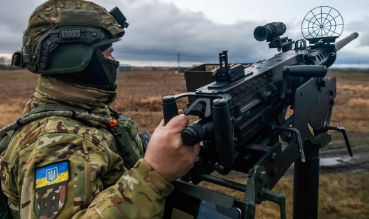Russian missiles killed at least 23 people in a second night of heavy strikes on Ukraine, a stark toll the Polish Prime Minister described as the result of appeasing “barbarians.”
Russia’s Increasing Drone Attacks on Ukraine
For more than six months, Russia has been using a new tactic of massive drone attacks on Ukraine. Since September, drones have been launched daily, mainly at night, targeting Ukrainian regions far from the front lines. The intensity of these attacks continues to rise, with February 22-23 seeing a record-breaking 267 drones deployed in a single night. However, military intelligence suggests that this may not be the peak. By mid-2025, Russia plans to launch as many as 500 drones in a single attack.
These drone strikes rely on a combination of high numbers, varying flight routes, and changes in altitude. This strategy makes it difficult for Ukraine’s air defenses to predict and counteract the attacks effectively. The volume of attacks and their unpredictable nature have resulted in considerable damage and strain on Ukraine’s air defense forces.
Russia’s Expanding Drone Arsenal and Production Capabilities
Russia has successfully adopted and expanded Iran’s Shahed drone technology. Initially, the primary drone used in attacks was the Shahed-136, also known as Geran-2. However, Russia has since increased its drone variations, now using multiple types in each attack. The newer models include the Garpia-A1, a variation of the Shahed, and the Geran-1, a simplified version. Additionally, Russia uses drones like the Parodya and Gerbera, which act as decoys or carry small warheads.
The ability to produce these drones in vast quantities has been key to Russia’s strategy. Reports indicate that Russia manufactures around 900 Shahed/Geran-2 drones monthly, along with at least 1,000 Parodya drones and more than 2,000 Garpia and Gerbera drones. The production of decoy drones like the Parodya has allowed Russia to deploy a mix of attack drones and false targets, overwhelming Ukrainian air defenses.
These drones are launched from multiple sites across Russia and occupied territories. At present, Russia operates drone launch sites in seven locations, including the Bryansk, Kursk, and Smolensk regions, as well as occupied Crimea. The number of launch sites is expected to increase to twelve by mid-2025, enabling Russia to send up to 500 drones in a single attack. Each additional launch site has led to an increase in the number of drones deployed per night.
Impact of Drone Attacks and Ukraine’s Air Defense Response
One of the most challenging aspects of Russia’s drone tactics is the high number of decoy drones. Up to 50% of the drones used in attacks are not armed with explosives, making it difficult for Ukrainian air defenses to distinguish between real and fake threats. As a result, every drone must be treated as a potential attack, putting additional pressure on Ukraine’s air defense forces.
It also strategically launches drones in waves from different locations throughout the night. This extends the period of alertness required by Ukrainian forces, stretching the country’s defensive resources. At times, these drone attacks are followed by missile strikes early in the morning, increasing the overall damage and making it harder for Ukraine to respond effectively.
Psychological warfare is another factor in these relentless attacks. The constant threat of drone strikes, combined with the repeated sound of air raid sirens and explosions, places immense stress on civilians and military personnel alike. The unpredictability of the attacks and the difficulty in intercepting every drone create a sense of vulnerability among the population.
Ukraine’s air defenses, however, have adapted to counter these threats. Mobile fire units equipped with large-caliber machine guns, man-portable air defense systems, and anti-aircraft guns have proven effective against many incoming drones. Soviet-era ZU-23-2 anti-aircraft guns, German Gepard systems, and electronic warfare technology have also played a significant role in neutralizing drones. Additionally, short- and medium-range air defense systems provided by Western allies have been crucial in intercepting Russian drones.
Despite concerns over reduced support from the United States, Ukraine’s air defense systems continue to receive intelligence from NATO and other sources. Surveillance of Russian fighter jet activity, missile launches, and drone movements remains operational through multiple channels. The effectiveness of Ukraine’s response has improved over time, but the scale and frequency of Russia’s attacks continue to test the resilience of its defenses.
Drone warfare strategy remains a critical element of its military operations, inflicting damage and maintaining pressure on Ukraine’s defensive capabilities. The ongoing attacks highlight the evolving nature of modern warfare and the challenges of countering large-scale drone offensives.

